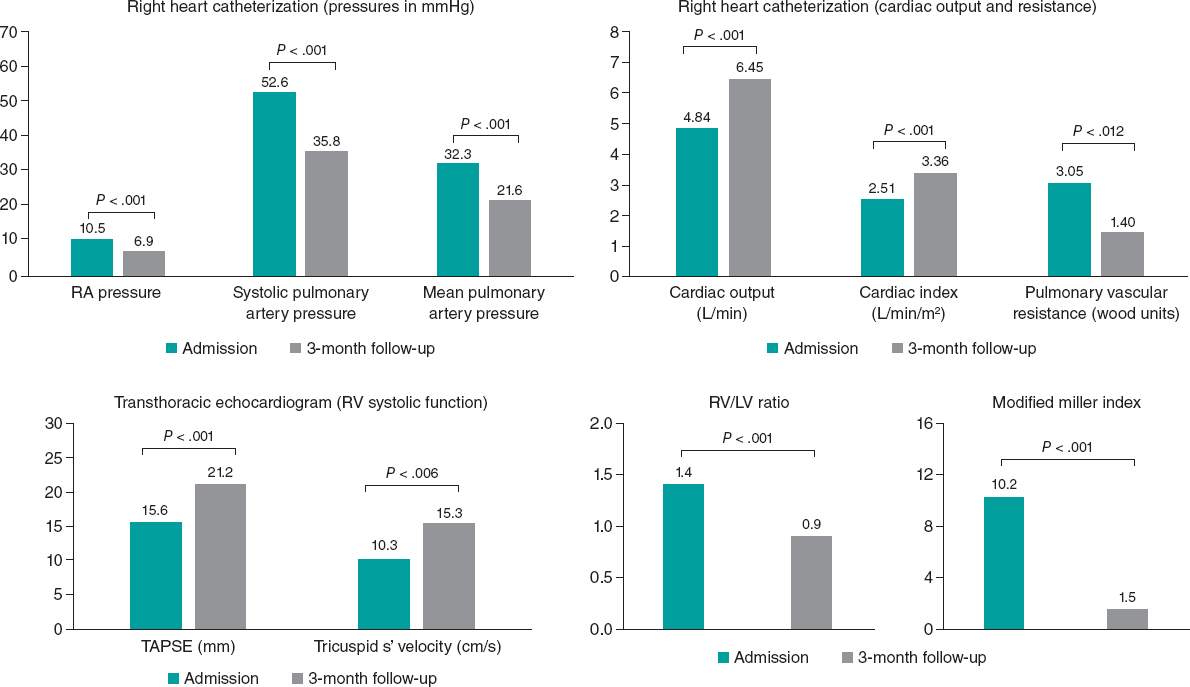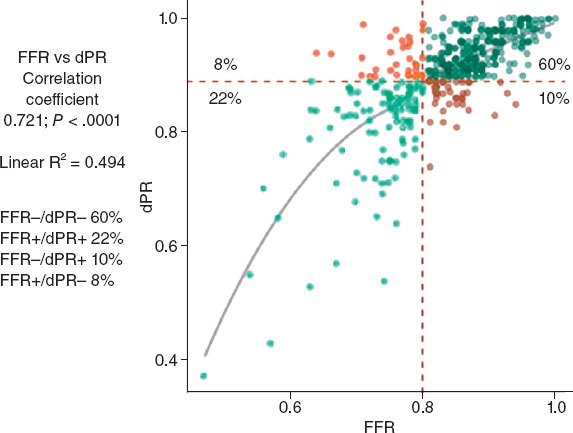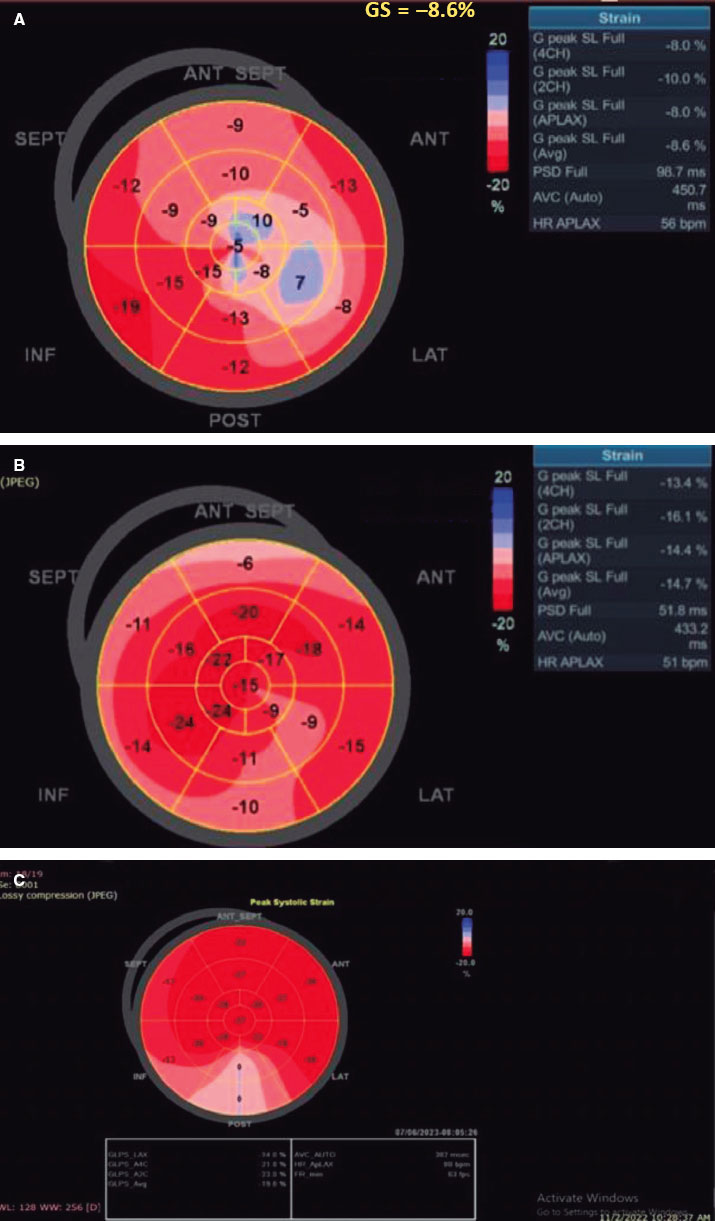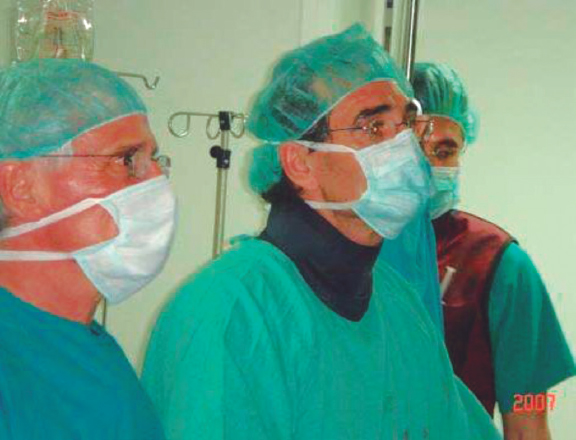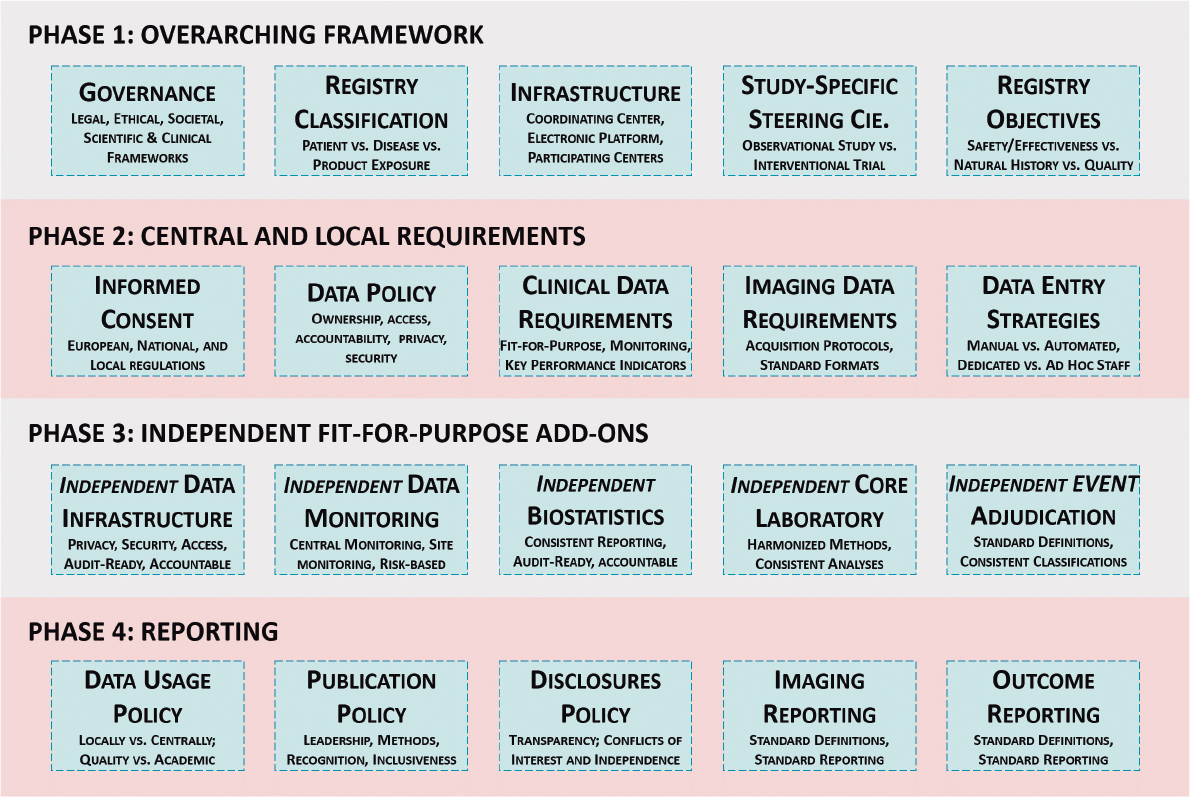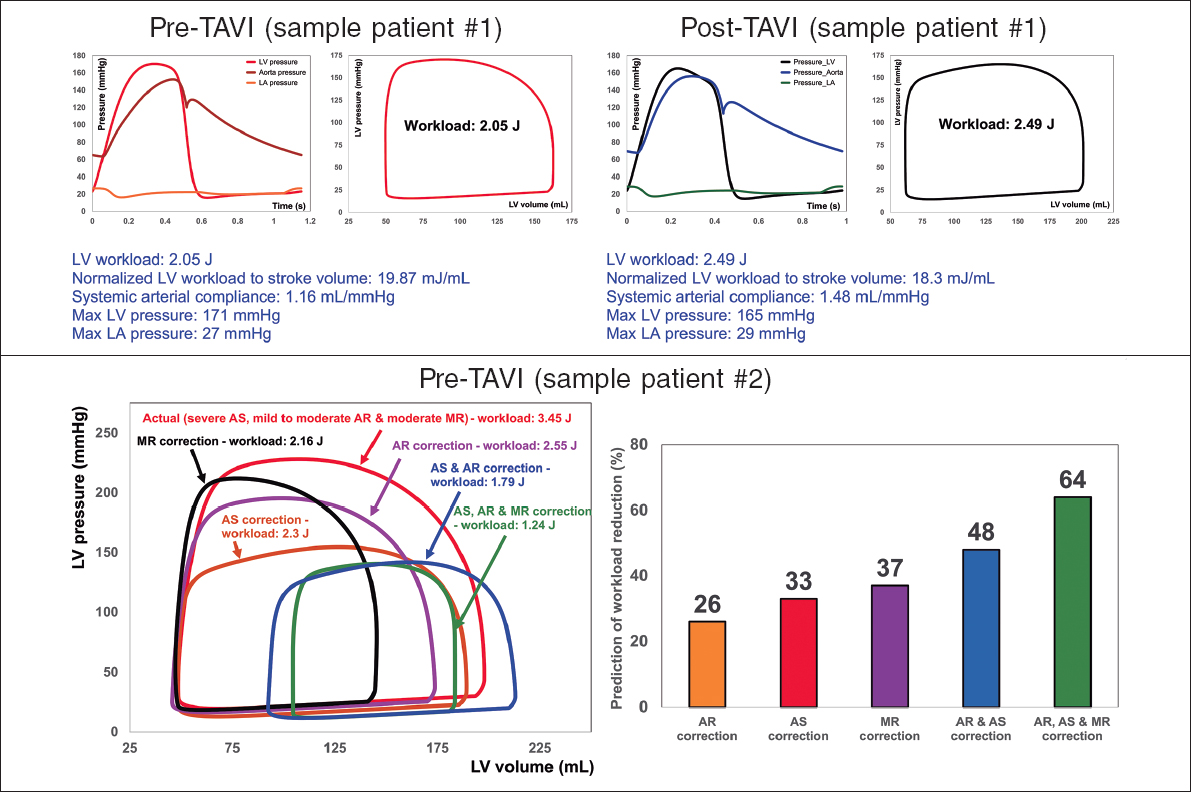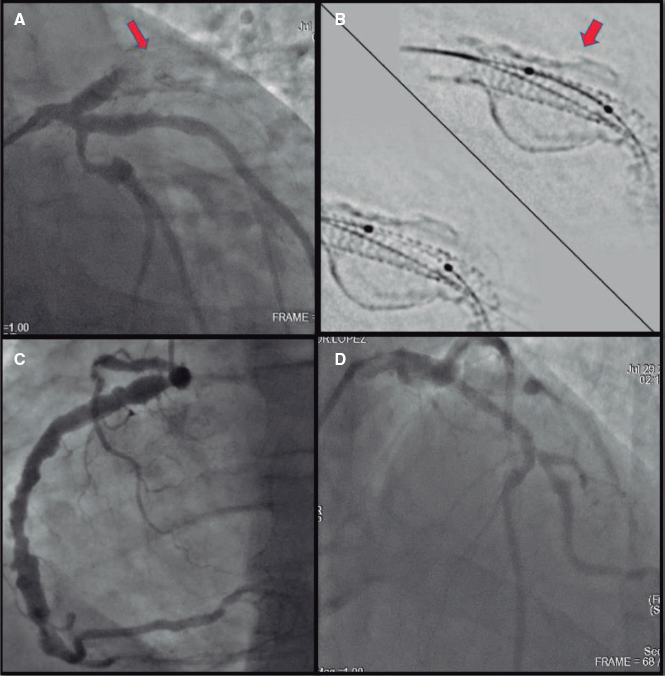Acute myocardial infarction-related cardiogenic shock (AMI-CS) carries a dismal prognosis. Short-term mortality is in the range of 40% to 50%.1 Until recently, only percutaneous coronary intervention of the culprit lesion reduced mortality within randomized controlled trials (RCT).1 More recently, the active microaxial flow pump showed a mortality reduction at 6-month follow-up in the Danish German Shock trial (DanGer-Shock).2 However, this RCT was performed in a highly selected group of patients with ST-elevation myocardial infarction only and excluded patients with possible hypoxic brain injury.2 In addition, it remains unclear whether the positive results were influenced by: a) device design (loading vs unloading of the left ventricle), b) patient selection, and c) treatment bias.3 High expectations have also been placed on venoarterial extracorporeal membrane oxygenation (VA-ECMO), and its use has risen exponentially by up to 40 times in the last decade despite a lack of relevant evidence from RCTs.4
In contrast to microaxial flow pumps, the concept of VA-ECMO is to provide temporary complete circulatory and respiratory support during the critical first days as a bridge-to-recovery, bridge-to-decision, bridge-to-durable left ventricular assist device (LVAD), or bridge-to-transplantation.
QUESTION: What evidence exists for the use of ECMO in cardiogenic shock due to a myocardial infarction?
ANSWER: The evidence is relatively robust and is discussed in more detail below.
– Evidence regarding efficacy. Evidence regarding percutaneous VA-ECMO in AMI-CS is relatively robust with 4 RCTs (ECLS-SHOCK I: n = 42 patients; EURO SHOCK: n = 35; ECMO-CS: n = 117; and ECLS-SHOCK: n = 420).5-8 The only study powered for a mortality difference is the ECLS-SHOCK trial, which included 420 randomized patients with AMI-CS.8 By study design, the included patients had more advanced CS, as a lactate level of > 3 mmoL/L was an inclusion criterion. There was no difference in 30-day mortality (49.0% in the control group vs 47.8% in the VA-ECMO group; relative risk 0.98; 95% confidence interval [95%CI], 0.80-1.19; P = .81).8 The neutral results in the primary endpoint were further supported by a lack of effect on secondary endpoints, such as lactate clearance, renal function, and catecholamine use and duration.
The evidence for the lack of benefit of VA-ECMO is further supported by an individual patient data (IPD) meta-analysis incorporating results from all 4 RCTs.9 There was no significant 30-day mortality benefit for AMI-CS patients receiving routine VA-ECMO (45.7%) in comparison with the control group (47.7%), (odds ratio [OR], 0.92; 95%CI, 0.66-1.29).9
– Evidence regarding safety. VA-ECMO use was associated with a 23.4% rate of moderate to severe bleeding vs 9.6% in the control group (relative risk, 2.44; 95%CI, 1.50-3.95) in ECLS-SHOCK.8 This finding has been confirmed in the IPD meta-analysis (OR, 2.44; 95%CI, 1.56-3.84).9 Since bleeding is known to be associated with worse outcomes,10 these results indicate that VA-ECMO may even be harmful for those experiencing this complication.
Another typical drawback of VA-ECMO is peripheral ischemic complications. Although a high rate (> 95%) of prophylactic antegrade perfusion cannulae was applied in ECLS-SHOCK, ischemic complications occurred with an OR of 2.86 (95%CI, 1.31-6.25), which was further aggravated in the IPD meta-analysis (OR 3.53; 95%CI, 1.70-7.34).8,9 VA-ECMO modifications to enable left ventricular (LV) unloading, such as VA-ECMO + Impella or VA-ECMO + intra-aortic balloon pump, should be further scrutinized, as despite potential benefits for LV recovery, they may increase bleeding risks even more.
Another problem with VA-ECMO was the prolongation of mechanical ventilation time and intensive care unit stay by roughly 2 days, which may also have caused more harm than benefit.8
Q.: In relation to the ECLS-SHOCK trial, what are the implications of its results on clinical practice and what do you consider the possible limitations of the study in this regard?
A.: When considering the implications of VA-ECMO on clinical practice, with evidence showing no mortality benefit but higher complications, guidelines usually classify this as a Class III A recommendation, advising against the routine use of VA-ECMO. However, the limitations or gaps in the evidence need to be discussed before final conclusions can be drawn.
On the limitations of the current evidence, negative or neutral trials often trigger discussions, particularly when the results do not concur with general perceptions, ie, VA-ECMO reduces CS mortality. A typical reflex is then to argue, using registry data, that RCTs are not valid.11
– Inclusion of resuscitated patients. The high rate of patients with successful resuscitation prior to randomization (>70%) in ECLS-SHOCK may have limited the VA-ECMO results since hypoxic brain injury cannot be positively influenced by mechanical circulatory support. Shock/hypotension and elevated lactate after resuscitation may not be directly associated with prolonged decreased cardiac output to a similar extent as in CS without cardiac arrest. This patient selection may be supported by the positive results of the DanGer-Shock trial.2 Notably, evidence for reduced cardiac output was not required in ECLS-SHOCK. As a result of the risk enhancement for inclusion, this resuscitation rate was higher than in previous RCTs in AMI-CS. Interestingly, mortality in resuscitated patients was numerically even lower than in those without resuscitation.8 In the IPD meta-analysis, the number of resuscitated patients was lower and no benefit was observed.9 Importantly, exclusion of resuscitated patients would lead to any trial result being less generalizable to all CS-like patients.
– VA-ECMO timing. Results from an observational meta-analysis for AMI-CS (IABP: n = 956; Impella: n = 203; VA-ECMO: n = 193) suggest that initiation of VA-ECMO prior to percutaneous coronary intervention reduces mortality.12 However, this was refuted in ECLS-SHOCK and the IPD meta-analysis.8,9
There are also other timing aspects to consider. In ECLS-SHOCK, VA-ECMO was started routinely after randomization. It remains unclear whether there is any clinical benefit to a watch and wait strategy and to decide for or against VA-ECMO only if there is further clinical and hemodynamic deterioration.
Q.: Is there any subgroup that may benefit from ECMO in this setting?
A.: In addition to the inclusion of resuscitated patients and timing aspects, the ECLS-SHOCK trial included patients with more advanced shock severity based on signs of tissue hypoperfusion. The SCAI shock classification was not in place at the start of the study and the definition is dynamic, which usually does not allow immediate staging.13 The distribution of the SCAI stages was therefore made retrospectively in ECLS-SHOCK using a modified post hoc definition.8 Some argue, therefore, that SCAI C patients were not sick enough to benefit from VA-ECMO or, in contrast, that SCAI stage E patients were in a futile situation. Irrespective of these considerations, no SCAI stage showed a benefit from VA-ECMO.
The question remains whether specific patient subgroups in AMI-CS benefit from VA-ECMO, as current guidelines do not mention patient selection.14 Importantly, there was no signal for a survival benefit of VA-ECMO in any of the subgroups analyzed.8,9
Q: Do you think there is a need for a new trial on the subject?
A.: THROUGH its mode of operation, VA-ECMO increases afterload. Multiple unloading strategies have been developed but these also increase invasiveness and possibly complications. In ECLS-SHOCK, unloading criteria were predefined, leading to a relatively low 6% rate of active unloading. However, more patients in the VA-ECMO group were treated with dobutamine, indicating medical unloading by increasing ventricular inotropy. When evaluating evidence for active unloading, it is also important to note that potential benefits were generated from retrospective observational studies only.15,16 A recent RCT comparing routine LV unloading by a transseptal left atrial cannula vs VA-ECMO alone showed no effect on mortality.17 This evidence suggests that further rigorous investigation is needed before the approach of using both VA-ECMO plus Impella for routine unloading can be adopted. Regarding the low use of durable LVADs or heart transplantation, in ECLS-SHOCK—similar to previous RCTs—the rate of patients receiving a durable LVAD or heart transplantation was < 2%. Advanced heart failure specialists often argue that VA-ECMO is mainly considered as a bridge-to-LVAD or transplantation and therefore that the trial was doomed to failure.11 Patients included in RCTs in AMI-CS are often older and not eligible for such treatment strategies. In addition, many of these patients have high rates of concomitant inflammation or infections precluding these advanced therapies.
In conclusion, for the vast majority of patients with AMI-CS, routine immediate VA-ECMO should be avoided. Future RCTs should define whether any subgroup can be identified and whether treatment modifications that reduce bleeding and limb ischemia complications or routine LV unloading strategies may alter the outcomes. In addition, currently evidence is only available for AMI-CS and not other causes of CS.
FUNDING
None.
STATEMENT ON THE USE OF ARTIFICIAL INTELLIGENCE
No artificial intelligence was used in the preparation of this article.
CONFLICTS OF INTEREST
None.
REFERENCES
1. Thiele H, de Waha-Thiele S, Freund A, Zeymer U, Desch S, Fitzgerald S. Management of cardiogenic shock. EuroIntervention. 2021;17:451-465.
2. Møller JE, Engstrøm T, Jensen LO, et al. Microaxial flow pump or standard care in infarct-related cardiogenic shock. New Engl J Med. 2024;390:1382-1393.
3. Thiele H, Desch S, Zeymer U. Microaxial Flow Pump in Infarct-Related Cardiogenic Shock. N Engl J Med. 2024;390:2325-2326.
4. Becher PM, Schrage B, Sinning CR, et al. Venoarterial extracorporeal membrane oxygenation for cardiopulmonary support. Circulation. 2018;138:2298-2300.
5. Ostadal P, Rokyta R, Karasek J, et al. Extracorporeal membrane oxygenation in the therapy of cardiogenic shock:Results of the ECMO-CS randomized clinical trial. Circulation. 2023;147:454-464.
6. Banning Amerjeet S, Sabate M, Orban M, et al. Venoarterial extracorporeal membrane oxygenation or standard care in patients with cardiogenic shock complicating acute myocardial infarction:the multicentre, randomised EURO SHOCK trial. EuroIntervention. 2023;19:482-492.
7. Brunner S, Guenther SPW, Lackermair K, et al. Extracorporeal life support in cardiogenic shock complicating acute myocardial infarction. J Am Coll Card. 2019;73:2355-2357.
8. Thiele H, Zeymer U, Akin I, et al. Extracorporeal life support in infarct-related cardiogenic shock. N Engl J Med. 2023;389:1286-1297.
9. Zeymer U, Freund A, Hochadel M, et al. Veno-arterial extracorporeal membrane oxygenation in patients with infarct-related cardiogenic shock - An individual patient data meta-analysis of randomised trials. Lancet. 2023;402:1338-1346.
10. Freund A, Jobs A, Lurz P, et al. Frequency and impact of bleeding on outcome in patients with cardiogenic shock. JACC:Cardiovasc Interv. 2020;13:1182-1193.
11. Combes A, Price S, Levy B. What's new in VA-ECMO for acute myocardial infarction-related cardiogenic shock. Intensive Care Med. 2024;50:590-592.
12. Del Rio-Pertuz G, Benjanuwattra J, Juarez M, Mekraksakit P, Argueta-Sosa E, Ansari MM. Efficacy of mechanical circulatory support used before vs after primary percutaneous coronary intervention in patients with cardiogenic shock from ST-elevation myocardial infarction:A systematic review and meta-analysis. Cardiovasc Revasc Med. 2022;42:74–83.
13. Naidu SS, Baran DA, Jentzer JC, et al. SCAI SHOCK stage classification expert consensus update:A review and incorporation of validation studies. J Am Coll Card. 2022;79:933-946.
14. Byrne RA, Rossello X, Coughlan JJ, et al. 2023 ESC Guidelines for the management of acute coronary syndromes:Developed by the task force on the management of acute coronary syndromes of the European Society of Cardiology (ESC). Eur Heart J. 2023;44:3720-3826.
15. Schrage B, Becher PM, Bernhardt A, et al. Left ventricular unloading is associated with lower mortality in patients with cardiogenic shock treated with venoarterial extracorporeal membrane oxygenation. Circulation. 2020;142:2095-2106.
16. Russo JJ, Aleksova N, Pitcher I, et al. Left ventricular unloading during extracorporeal membrane oxygenation in patients with cardiogenic shock. J Am Coll Card. 2019;73:654-662.
17. Kim MC, Lim Y, Lee SH, et al. Early left ventricular unloading or conventional approach after venoarterial extracorporeal membrane oxygenation:The EARLY-UNLOAD randomized clinical trial. Circulation. 2023;148:1570-1581.
* Corresponding author.
E-mail address: holger.thiele@medizin.uni-leipzig.de (H. Thiele).




